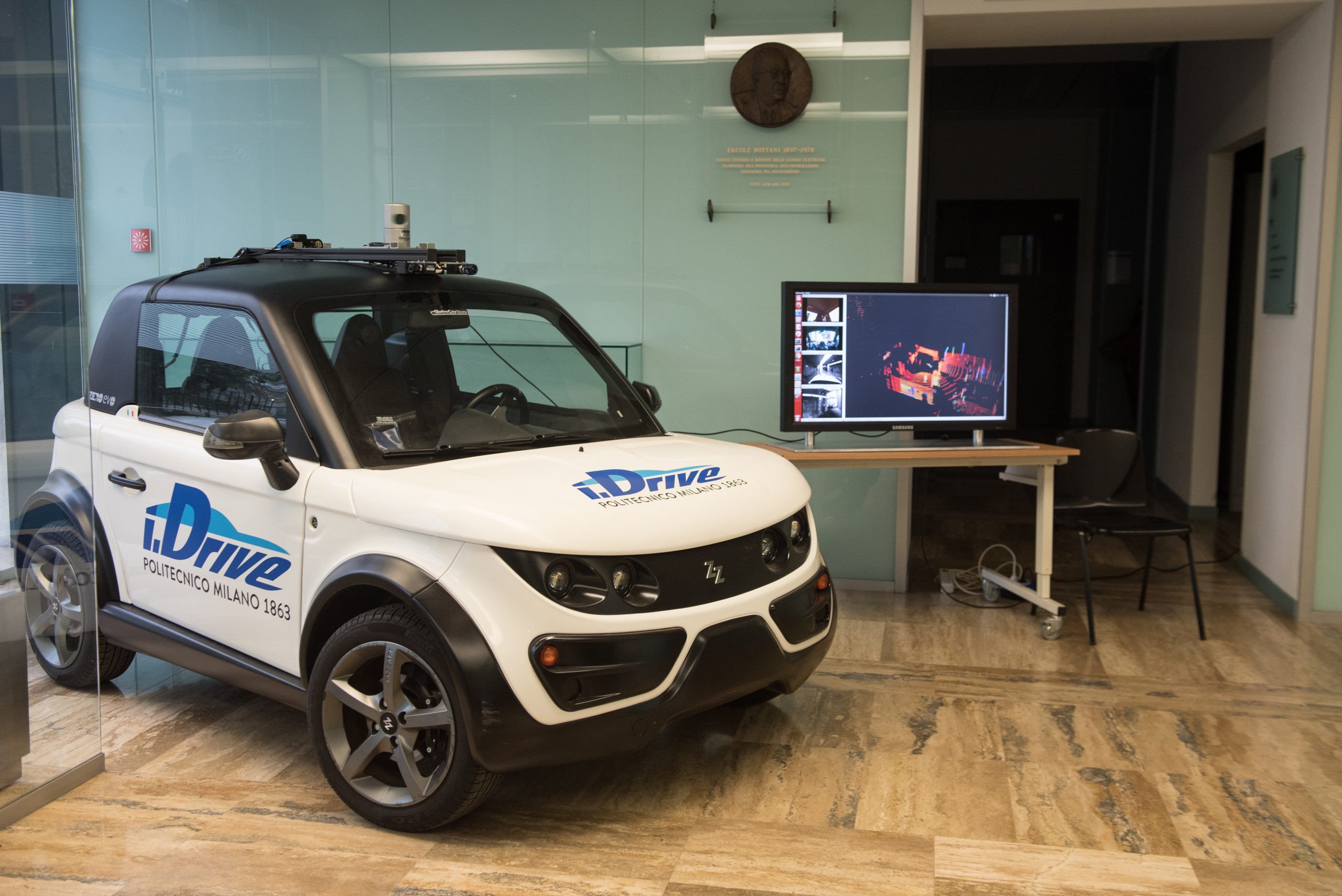What shall I study during my master?
How is the master's degree study plan organized?
First of all, it should be mentioned that the master’s degree is delivered entirely in English and welcomes a good number of international students. The master’s degree program is organized, like all master’s degrees in Europe, on 120 credits delivered over two years: one hundred credits of teaching and twenty credits of thesis. The polytechnic offers three plans of study, called Pre-Approved Study Plans (PSPA). Two of them are vertical, namely the plan in “Business and Innovation” (T2D) and the plan in “Artificial Intelligence” (T2I) while one is free and the students can build it as they like: it is the plan in “Computer Science and Engineering” (T2A), the one that offers the most freedom of choice. Some courses are common to all three study plans.

What is studied in the “Business and Innovation” (T2D) study plan?
The study plan in “Business and Innovation” is divided as follows: the first year includes all the core IT subjects that complete the bachelor’s degree course. The remaining forty credits of the second year are taken together with the management engineers, with typically ‘management’ subjects. The thesis, however, remains a computer science thesis. This plan is aimed at training a figure who deals with ICT management and thus with all aspects of business management through information technology. The student has freedom of choice over around 40 credits, which can be selected from a well-defined portfolio of courses.
What is studied in the "Artificial Intelligence" (T2I) study plan?
The study plan in “Artificial Intelligence” is vertical on the whole world of artificial intelligence and “Machine Learning,” in all its declinations. Again, there is the possibility to choose some of the subjects, which include the applications of artificial intelligence in particular domains such as autonomous robotics, video games, computer vision, data mining and recommender systems.
What is studied in the "Computer Science and Engineering" (T2A) study plan?
The study plan in “Computer Science and Engineering” is a very general one, where the number of rules one has to follow is minimal. Precisely because ours is an ever-changing world, students, in this way, can choose which courses to take based on their personal aptitudes. Thus, of the total 120 credits, taking out the 20 from the thesis and the 35 from the compulsory subjects, the remaining 65 can be freely chosen by the student, drawing from a set of about a hundred different teachings. In this way, one can construct the study plan one prefers.
What are the "tracks" in Computer Science and Engineering study plan?
As mentioned, students can freely choose the subjects they prefer but sometimes, given the richness of the offer, this freedom of choice can lead them to find themselves a bit “lost”. For this reason, we decided to build a dozen “tracks,” which are not real curricula but recommended paths to build a coherent professional figure with respect to certain addresses, for example “Big Data” and “Data Science” or “Cyber Security.” In practice, they direct students to choose from specific subsets of teachings within the overall offering. These pathways are not official (and therefore binding) in nature; they are advice given by experts who suggest how to compose the study plan.
“The ‘tracks’ are not binding, they are advice given by experts.”
The "tracks"
Ambient Intelligence (AmI) involves smart devices that interact with users, adapting to their needs and behaviors, thanks to wireless networks and data analysis methodologies. AmI is applied in smart homes, smart cities, healthcare, commerce, entertainment, tourism, and agriculture. The curriculum covers the technologies necessary to develop AmI and the methodologies for analyzing large amounts of data.
We live in an era where managing the vast amount of data coming from the web, social media, and smart devices is a significant technical challenge but holds great economic and social value. Data Science aims to extract useful insights from this Big Data to provide a competitive advantage. This program offers courses to develop the skills necessary to tackle the “information overload.”
ICT is essential in Life and Health Sciences. It integrates technologies such as sensors, wearable computing, robotic systems, augmented reality, and nanotechnology. It also supports Bioinformatics and e-Health in managing data for research and clinical purposes. The Bioinformatics & e-Health program offers advanced skills in ICT technologies, basic biology, and data interoperability, promoting interdisciplinarity.
This program explores the impact of ICT on organizations, focusing on technology, processes, and strategies. Students learn to design innovative IT infrastructures and use information systems for data management and analysis. The program emphasizes software design, data analysis, and information technology to promote innovation in Industry 4.0.
This program offers a comprehensive overview of cybersecurity, including courses on basic computer security, cryptography, IT law, digital forensics, cybercrime, and offensive and defensive cybersecurity. Courses on AI, Machine Learning, and embedded and distributed systems are also recommended.
The program combines a focus on three essential applications (games, entertainment, and learning) with the study of interaction technologies (from smartphones to wearable technologies and immersive reality) and methodological tools for usability, user experience, and impact assessment.
The “Internet Engineering” program offers the opportunity to study sensors, channels, archives, and interfaces, to master the design and development of essential applications for any organization. The Internet is crucial for continuous connectivity, indispensable for information, communication, and daily activities.
With the Internet of Things, more and more computational devices will be integrated into everyday objects. Pervasive Systems enable devices and people to connect and automatically respond to environmental changes.
This track delves into the creation of autonomous robots and their interaction with users, covering architecture, sensory analysis, planning, and interfaces. It includes artificial vision, which is central and has many applications beyond robotics. Technologies developed for autonomous robots, such as path planning and visual perception, are also used in other sectors, such as surveillance and quality control.
This program trains engineers to design, develop, and manage complex software systems. It includes courses on software design, IT technologies, development methods, legal and ethical aspects, and specific application areas such as information systems, embedded systems, video games, robotics, the Internet of Things, and E-health.
Are all the courses of the other two plans available in the list of the free plan courses?
Many of them. For example, “Machine Learning,” “Fundamentals of Artificial Intelligence” and “Data Mining,” which are core teachings of the “Artificial Intelligence” study plan, are also available in the “generic” plan. We can say that more than half of the specialized subjects that characterize and distinguish the two curricula T2D and T2I are also found in the generic T2A study plan.

